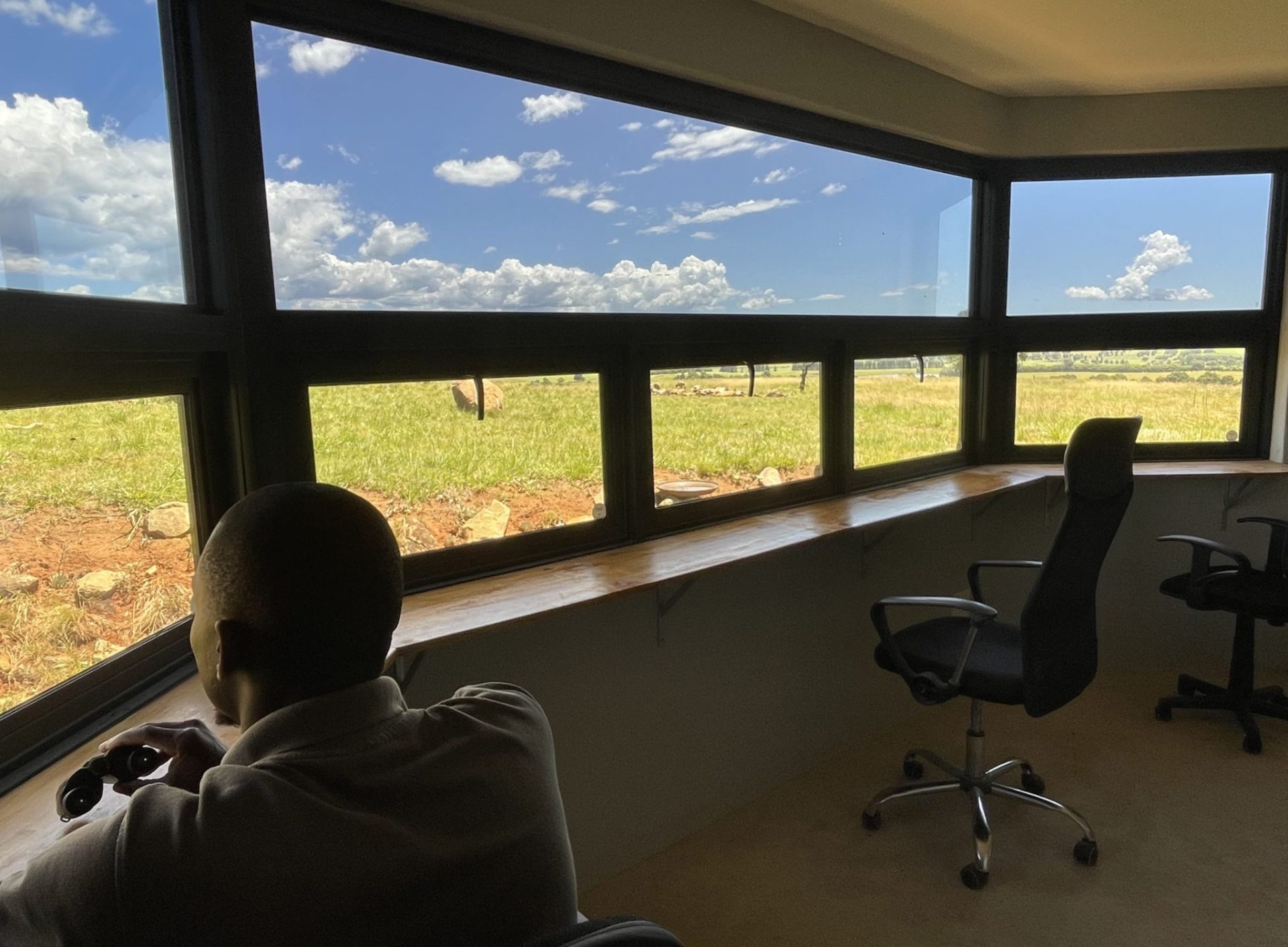Mzimkulu Vulture Hide has launched in the Southern Drakensberg to raise awareness and support for endangered vulture conservation in the region!
Drakensberg, South Africa (18 February 2024) — A much-needed addition to the Southern Drakensberg region, the Mzimkulu Vulture Hide is set to launch to the public on 19 February 2024. Created to support endangered Vulture conservation through a Vulture Safe Feeding Zone, the hide is premised to be a place of public awareness, education about vultures and support for their futures.
Located in the heart of the Southern Drakensberg, the Mzimkulu Vulture Hide is fitted with one-way glass so that vultures can be viewed and photographed but not disturbed (only six guests can visit at a time). Part of Wildlife ACT’s Southern Drakensberg Conservation Project, the main objective of this initiative is to finally provide the Southern Drakensberg with a sustainable safe feeding site for vultures.
In addition to getting to see the fascinating birds, the Hide is also equipped with educational material to ensure visitors leave having learnt more about conservation and wildlife in the region as public awareness about the challenges faced by vultures plays a hugely helpful role in the vulture’s plight.
The hide was the work of many supporters, including Ezemvelo KZN Wildlife, Project Vulture, Drakensberg Conservation Initiative, Bearded Vulture Recovery Programme and the Endangered Wildlife Trust as well as through the support of local Underberg farms.

The Importance of Vulture Conservation in the Southern Drakensberg Region
Vultures are nature’s cleanup crew, scavenging and disposing of animal remains that could otherwise become breeding grounds for disease. By swiftly recycling organic matter, Vultures help prevent the spread of illnesses that could affect both humans and animals.
Despite their importance, Vulture numbers across Africa are in rapid decline and their range numbers have decreased by up to 70%. Of the six Vulture species that occur in South Africa, all are either Vulnerable, Endangered or Critically Endangered. Despite being critical to our ecosystems, Vulture numbers are in serious decline, with only 50 to 100 breeding pairs of Bearded Vulture in South Africa and Lesotho and about 4,500 breeding pairs of Cape Vulture left in South Africa.
The Importance of Vulture Safe Feeding Sites
Vulture-safe feeding sites or ‘vulture restaurants’ are areas where uncontaminated carcasses are intentionally placed to provide a safe and sustainable supplementary food source for the vultures, helping to ensure their survival and contribute to the ecological balance.
The Southern Drakensberg is a stronghold location for two of South Africa’s cliff-nesting species of vulture, namely the Bearded Vulture and Cape Vulture. As such, it is essential for conservation initiatives to be spearheaded in this region, aimed at preserving and protecting this crucial population of endangered birds.
A Crucial Stronghold for South Africa’s Cliff Nesting Vultures
The Mzimkulu Vulture Hide is located 8KMs from Underberg, in KwaZulu-Natal’s Southern Drakensberg. The hide location rests on the foot of the Maloti-Drakensberg Park, which is a World Heritage Site and is one of the five largest protected areas in South Africa – providing one of the last strongholds for several threatened and endangered species.
The Maloti-Drakensberg Park World Heritage Site is renowned for its spectacular natural landscape, its importance as a haven for many threatened and endemic species, and its wealth of rock paintings made by the San people over a period of 4,000 years. The Heritage Site covers an area of 249,313 ha making it the largest Protected Area complex along the Great Escarpment of Southern Africa. Extending along most of KwaZulu-Natal’s south-western border with Lesotho, the property provides a vital refuge for more than 250 endemic plant species and their associated fauna.
It also holds almost all of the remaining subalpine and alpine vegetation in the KwaZulu-Natal province, including extensive high-altitude wetlands. The uKhahlamba Drakensberg Park has been identified as an Important Bird Area and forms a critical part of the Lesotho Highlands Endemic Bird Area.

